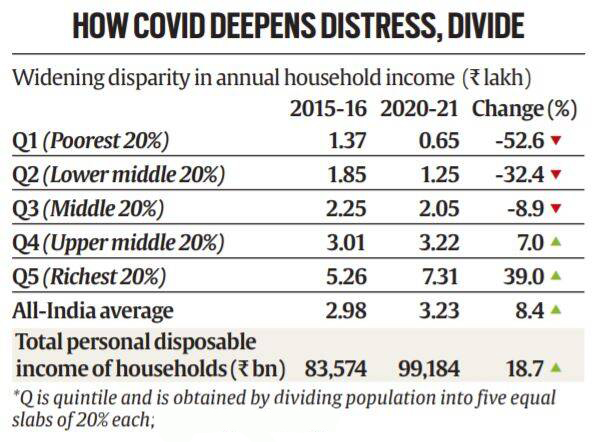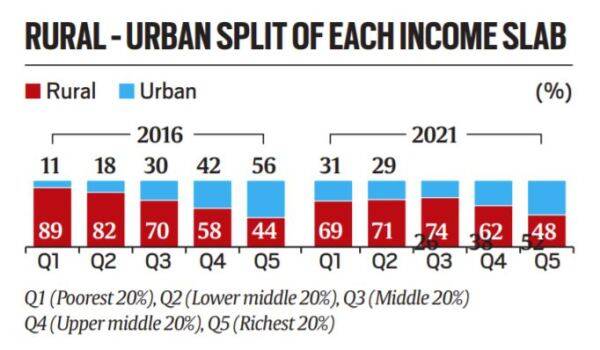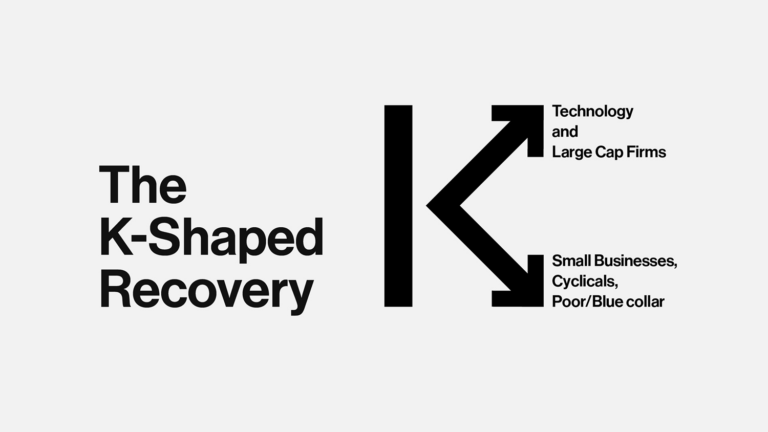K-Shaped Economic Recovery | 24 Jan 2022
For Prelims: K-Shaped Economic Recovery, Types of Economic Recovery
For Mains: K-Shaped recovery of Indian economy with examples, Importance & Limitations of Economic Growth.
Why in News
According to the latest round of ICE360 Survey 2021, K-shaped recovery emerges from the economy hit by the coronavirus pandemic.
- The survey was conducted by People’s Research on India’s Consumer Economy (PRICE), a Mumbai- based think-tank.
- The survey, between April and October 2021, covered 2,00,000 households in the first round and 42,000 households in the second round.
Key Points
- Effect on Annual Income:
- The annual income of the poorest 20% of Indian households, constantly rising since 1995, plunged 53% in the pandemic year 2020-21 from their levels in 2015-16.
- In the same five-year period, the richest 20% saw their annual household income grow 39% reflecting the sharp contrast Covid’s economic impact has had on the bottom of the pyramid and the top.
- Urban Poor Most Hit:
- The survey shows that the pandemic hit the urban poor most and eroded their household income.
- This resulted in job losses and loss of income for the casual labour, petty traders and household workers.
- The pandemic brought economic activity to a standstill for at least two quarters in 2020-21 and resulted in a 7.3% contraction in GDP in 2020-21.
- The survey shows that the pandemic hit the urban poor most and eroded their household income.
- Rise in the Share of Poor in Cities:
- While 90% of the poorest 20% in 2016, lived in rural India, that number had dropped to 70% in 2021.
- On the other hand, the share of the poorest 20% in urban areas has gone up from around 10% to 30% now.
- View of Economist on K Shaped Recovery:
- The government needs to do more to prevent a K-shaped recovery of the economy hit by the coronavirus pandemic.
- The Indian economy has "some bright spots and a number of very dark stains" and the government should target its spending "carefully" so that there are no huge deficits.
- The bright spots are the health of large firms, the roaring business the IT and IT-enabled sectors are doing, including the emergence of unicorns in a number of areas, and the strength of some parts of the financial sector.
- The "dark stains" are the extent of unemployment and low buying power, especially amongst the lower middle-class, the financial stress small and medium-sized firms are experiencing, "including the very tepid credit growth, and the tragic state of the schooling".
Economic Recovery
- About:
- It is the business cycle stage following a recession that is characterized by a sustained period of improving business activity.
- Normally, during an economic recovery, GDP grows, incomes rise, and unemployment falls and as the economy rebounds.
- Types:
- Economic recovery can take many forms, which is depicted using alphabetic notations. For example, a Z-shaped recovery, V-shaped recovery, U-shaped recovery, elongated U-shaped recovery, W-shaped recovery, L-shaped recovery and K-shaped recovery.
- K-Shaped Recovery:
- A K-shaped recovery occurs when, following a recession, different parts of the economy recover at different rates, times, or magnitudes. This is in contrast to an even, uniform recovery across sectors, industries, or groups of people.
- A K-shaped recovery leads to changes in the structure of the economy or the broader society as economic outcomes and relations are fundamentally changed before and after the recession.
- This type of recovery is called K-shaped because the path of different parts of the economy when charted together may diverge, resembling the two arms of the Roman letter "K."
Way Forward
- The government must spend where necessary at this time to alleviate the pain in the most troubled areas of the economy.
- Announcing a credible target for the country's consolidated debt over the next five years coupled with the setting up of an independent fiscal council to put forward on the quality of the budget would be very useful steps.
- Budgetary resources can be expanded through asset sales, including parts of government enterprises and surplus government land.



